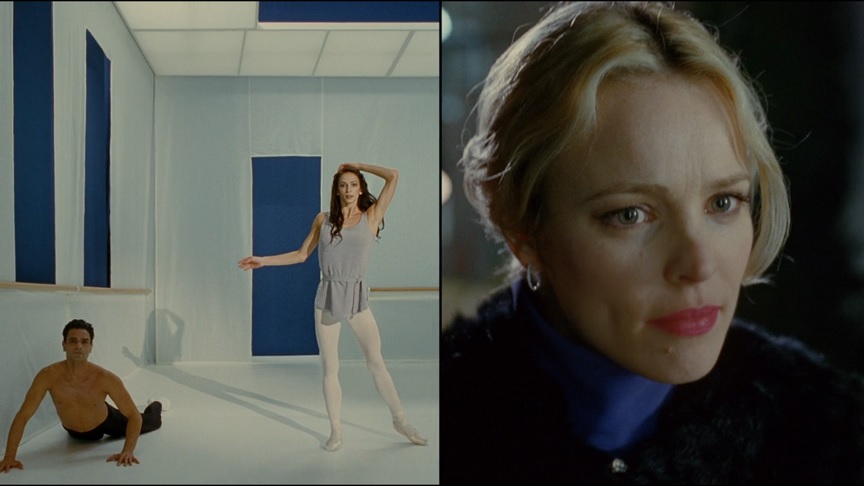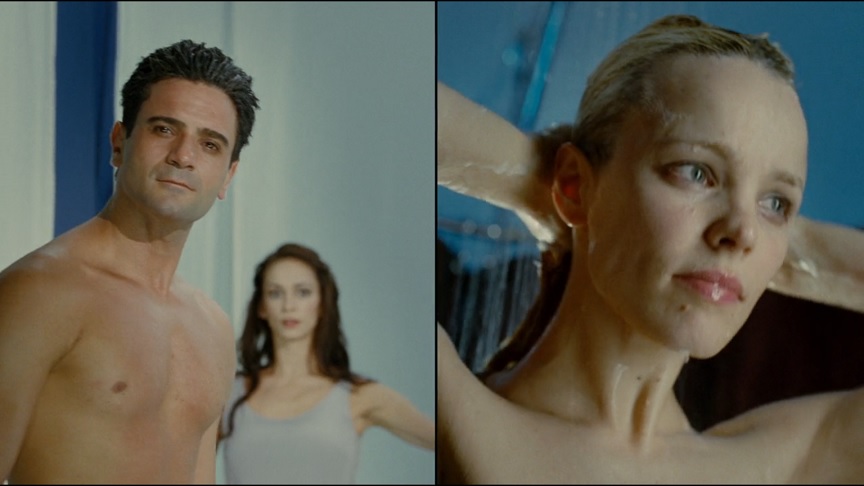"THE THING ABOUT SPLIT SCREEN IS: IT'S KIND OF A MEDITATIVE FORM"

I found myself watching Passion the other night, thinking I was just going to watch the opening scenes. As happens often when I start watching a Brian De Palma film, pure enjoyment takes over, and I kept watching. The split screen sequence in Passion was just as mesmerizing and surreal as I'd remembered.
Then, today, I came across a quote from an interview with De Palma in the New York Times, published upon the release of Passion. For the article, Nicolas Rapold had wanted to sit with De Palma while the two viewed clips from older films that inspired parts of Passion, but De Palma playfully suggested they watch clips from his own films instead, saying, "I could only refer to my own films. Nobody does this but me."
As they watch the split screen sequence from De Palma's Sisters, De Palma tells Rapold, "The thing about split screen is: It’s a kind of meditative form. You can go very slowly with it, because there’s a lot to look at. People are making juxtapositions in their mind. And you can have all this exposition mumbo jumbo on one side."
The part of the quote that stuck with me was that split screen is "kind of a meditative form." It strikes me that De Palma's use of split screen has gotten more and more meditative in his later films: from the juxtapositions of fictions and truth in the complex split screen machinations of Snake Eyes, to the where-are-we-now and who's-watching-who blender of surveillance, thievery, and art in the split screen sequence from Femme Fatale. And then there is the split screen in Passion, which is so oddly beautiful and eerie at the same time. Rapold and De Palma watch that sequence for the article, as well:
Some filmmakers claim not to watch their own films, or say they only see the mistakes. Mr. De Palma displayed no such qualms as he pored over the split-screen sequence in “Passion.”On the right-hand side, Ms. McAdams as Christine goes about her business after a party at home, showering undisturbed.
“I told her, ‘Just get yourself ready,’ and she could make that as long or as short as she wanted,” Mr. De Palma said. “I would just cut it.”
On the left, as the ballet unfolds, the image cuts from a tight close-up on Ms. Rapace’s eyes to the duet in progress. The piece is Jerome Robbins’s version of “Afternoon of a Faun,” in which a couple dance as if facing the mirrored wall of a studio. In Mr. De Palma’s hands, that means they’re looking dead into the camera.
Meanwhile, somebody’s now in Christine’s house.
“You’re lulling the audience,” Mr. De Palma said of the combination of sequences. “I had no idea how it would work. I just had an instinct about it. This is your very typical point-of-view murderer shot, but here juxtaposed against this beautiful ballet.”
The dance grows more intimate. Christine’s stalker comes closer. Art on the left, death on the right.
“And then whack!” he exclaimed.
It was a resounding end to the scene, but just another step in Mr. De Palma’s nightmarish world of suspense.
























Updated: Friday, June 26, 2020 12:49 AM CDT
Post Comment | View Comments (5) | Permalink | Share This Post



